








MIDWEEK UPDATE 1 MAY 2019Plan Your Weekend……...Forthcoming Events……..Aviation News Worldwide Incidents and Accidents……This Week in Aviation History   30 May-2 June: 5th Annual Uis Fly-in Namibia. Contact Henk Koster oomgaljoen@swakop.com 1: Military Festival Voortrekker Monument. 2-5: SAPFA President's Trophy Air Race - Saldanha Airfield. Contact Rob Jonkers 082 804 7032 e-mail: chairman@sapfa.co.za. Website: www.sapfa.co.za e-mail: Race@sapfa.org.za 4: SAAF Museum Air Show at AFB Zwartkops. Contact Officer Commanding e-mail: oc@saafmuseum.org.za Tel: 012 351 2290 POSPONED    11-12: NAC Bush Weekend at Letsatsi Game Reserve. Deon 082 458 5719, Deneys 082 891 4354 or JP 083 625 4804. 10 & 11: Lowveld Air Show at Nelspruit airport. Contact Monica Fourie Tel: 083 619 3597 e-mail: monica.fourie@kishugu.com 10-12: Battlefields Fly-in. Contact Dave O'Halloran e-mail: gm@battlefiedslodge.co.za 14-17: NAMPO Agricultural Trade Show near Bothaville, Free State. Contact Wim Venter Tel: 086 004 7246 e-mail: Wim@grainsa.co.za 18: SAPFA Sheila Taylor Fun Rally - Krugersdorp Airfield. Contact Frank Eckard cell: 083 269 1516 e-mail: frank.eckard@mweb.co.za 19 & 20: SAC Free State Regionals at Tempe Airport. Contact Annie Boon e-mail: chunge@mweb.co.za 25: Botswana International Air Show Matsieng Aerodrome (FBMA). Contact Hentie de Wet e-mail: hentie@dwddrilling.com 26: Springs Airfield MU Fly in. Contact Fanie 083 789 5507 or Gerhard 082 771 3329.   1: Newcastle Airshow. Contact Johan Pieters johan@champ.co.za 082 923 0078 1: Klipriver Breakfast Fly-in. Contact Freddie 083 442 5683 8: Bethlehem Speed Rally - Bethlehem Airfield - Contact Jonty Esser e-mail: jonty@promptroofing.co.za cell: 082 855 9435 8: Kroon Fly-in. For more info contact Dawie 083 576 2355 or Marius 083 419 6613 10: World Precision Flying Championships - Castellon Spain - Contact Hans Schwebel e-mail: hans.s@britsgranite.co.za cell: 082 656 3005 12-15: Zimbabwe Air Rally. Mel Cooper cell: + 263 773 218426 e-mail: zimairrally@gmail.com 17-23: 53rd Paris Air Show. Contact E-mail: expo2019@siae.fr Website: www.siae.fr 22: V-Dubs and Harvards Grassland's Flying Club Breakfast Fly-inn. Contact Adrienne 071 604 4648. 22: SAPFA Vintage Rally - Krugersdorp Airfield 22: Mafikeng Airshow. Contact Relibile Mofokeng e-mail: relibilemofokeng@gmail.com cell: 073 837 0162 22: Reefsteamers train, plane and vintage car event from Krugersdorp to Magalies. Contact Ian Morrison e-mail: imorison@worldonline.co.za 23-28: South African Hot Air Balloon Championships. Bill Harrops, Skeerpoort North West Province. Contact Richard Bovell e-mail: chairman@bafsa.co.za 27-30: SAC National Championships Malelane airfield. Contact Annie Boon e-mail: chunge@mweb.co.za    4-6: AERO South Africa Wonderboom National Airport, Pretoria. Contact: Tel +27 120 599 6151 e-mail: Amanda.Dube@za.messefrankfurt.com 6: Wonderboom Adrenaline Show. Contact Antionette van der Nest cell: 072 218 7322 e-mail: antionette@bluebutterfly.co.za 12-14: EAA Nysltroom Viegklub Taildraggers. Contact Richard Nicholson cell: 082 490 6227 e-mail: flybenchmark@gmail.com 13: SAPFA Hoedspruit Fun Rally Hoedspruit Civil Airfield> Contact Frank Eckard cell: 083 269 1516 e-mail: frank.eckard@mweb.co.za 22-28: EAA AirVenture Oshkosh, Wisconsin, USA. Camping on the airfield contact Neil Bowden E-mail: neil1@telkomsa.net. Hotels in Appleton contact Calvin Fabig E-mail: calvin@designer.co.za 25-27: Brits - Air Navigation Race (ANR) Nationals - Brits Airfield. Contact Frank Eckard e-mail: frank.eckard@mweb.co.za cell: 083 269 1516  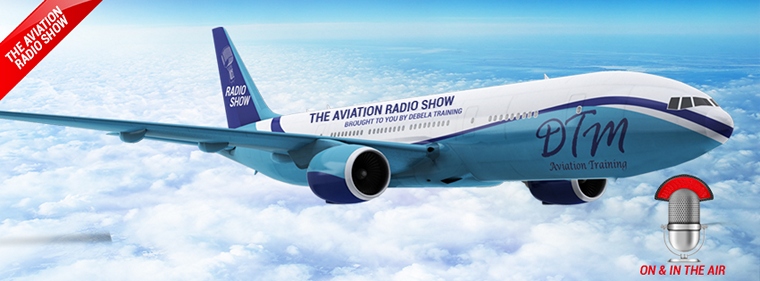 The Aviation Radio Show; get all your questions answered in one place. To listen to a recording of the live broadcast click on the link: www.debela.co.za/aviation-radio-show   TURKISH-DESIGNED AIRCRAFT WINS GERMAN EXCELLENCE AWARD  An aircraft modelled by a Turkish designer was rewarded for its perfection at the German Design Award 2019. Created by the design centre Designnobis team led by its founder Hakan Gürsu, the Turkish Eagle Alpina received the "Excellent Product Design" award. Image © Alpina According to a statement by Celal Gokçen, owner of the factory, the aircraft was the first Turkish design in 10 years to win gold in a competition among international industry giants. According to the jury statement on the official webpage of the competition, "Alpina is a pleasantly compact and exciting sports aircraft. A sensational, totally contemporary and elegantly designed aircraft that is ideal for short distances," the statement reads. The German Design Award is organized under the auspices of the German government to support the culture of industry, production and design since 1969.  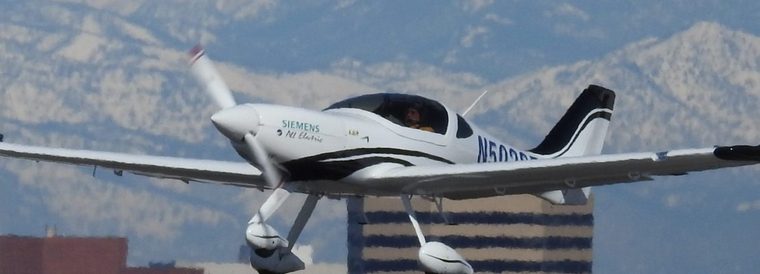 Bye Aerospace has rebranded its family of electric aircraft formerly known as "Sun Flyer" to "eFlyer," the company announced today. The eFlyer family of aircraft, including the 2-seat eFlyer 2 and the 4-seat eFlyer 4, aims to be the first FAA-certified, practical, all-electric airplanes to serve the flight training and general aviation markets. Photo © Bye Aerospace. George E. Bye, Founder and CEO of Bye Aerospace, said eFlyer more accurately represents the aircraft's high-tech all-electric propulsion system. "We originally thought solar cells would be standard on the airplane's wings," Bye said. "However, with eFlyer's primary markets being flight training and air taxi services, it makes more sense to make the price of the airplane as reasonable as possible." To date, Bye Aerospace has received 298 total customer commitments for both aircraft, including a recent agreement with OSM Aviation Academy to purchase 60 eFlyer 2s. "It is important that the airline industry steps up to the challenge of developing more environmentally friendly transportation, said Espen Høiby, CEO of OSM Aviation Group, a leading provider of air crews for the international airline industry. "We are committed to a socially responsible and sustainable business." Norwegian partner, Elfly AS, has also added 10 new eFlyer deposits, for a total of 18 deposits. "Bye Aerospace has a strong team, and I think they will be the first to mass produce a certified FAR 23 and EASA 23 all-electric airplane," said Eric Lithun, CEO of Elfly AS. "This is the game changer of aviation for small airplanes. The Bye Aerospace eFlyer will be the Tesla of the general aviation industry." Bye Aerospace is working with Garmin's engineering team to implement the G3X integrated flight display onto the eFlyer 2. Siemens will provide electric propulsion systems for the eFlyer 2-the 57 lb. SP70D motor with a 90kW peak rating (120 HP), and a continuous power setting of up to 70kW (94 HP). The eFlyer 2 successfully completed the first official flight test with a Siemens electric propulsion motor February 8 at Centennial Airport, south of Denver, Colorado.  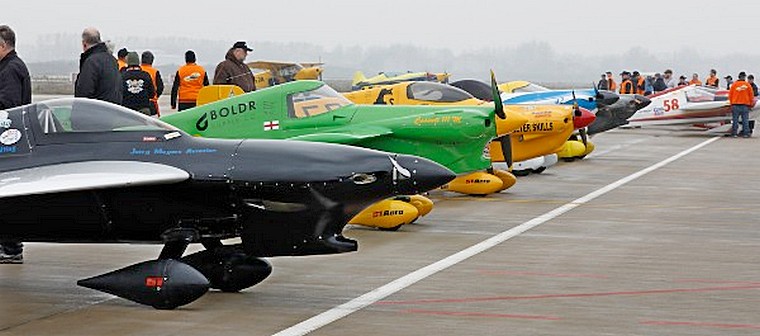 Air Race E is officially one-year-old! To mark the momentous anniversary of Air Race E, we've taken a look back at an earth-shattering 12 months for the world's first all-electric airplane race. Photo © Air Race E From work beginning on the first electric airplane with the University of Nottingham to the announcement of a huge global partnership with Airbus, things have gone from a few notes on a piece of paper to a brand-new sport being created. We've been brave and bold to start such an innovative project and the first electric airplane race in history is only months away! Air Race E have spent the last year making the amazing vision of electric aviation in motorsport racing a reality: the airplanes, the race pilots, the engineers, the sports associations, a test centre in Europe and the racing heritage all coming together. Development of the first prototype electric race airplane then took a major leap forward in November last year as an innovative partnership was announced between the University of Nottingham and Air Race E. A new integrated 'plug and play' electric motor, battery and power electronics system is being designed and retrofitted into an existing petrol-powered Air Race 1 plane in workshops at the University. The prototype race airplane will help shape the model and rules for Air Race E, ahead of the inaugural race in 2020. Great news often comes in pairs and in November last year the revolutionary Air Race E plans received backing from the Light Aircraft Association (LAA). The LAA, which supports and inspects the operation of over 2,600 light aircraft in the UK, committed their support in developing the technical regulations for the sport of electric airplane racing, which will be sanctioned by the Formula Air Racing Association (FARA) and its counter-part in France, APAF. February marked a huge stride forward with Airbus announced as the Official Founding Partner of Air Race E. Helping to drive the development and adoption of cleaner, faster, and more technologically advanced electric engines that can be applied to urban air mobility vehicles and, eventually, commercial aircraft. With the launch of the Air Race E rules this month, anyone can now start building planes for the series in preparation for 2020. Potential teams from around the world have already shown a keen interest. Why not look at getting a team together for this unique opportunity?  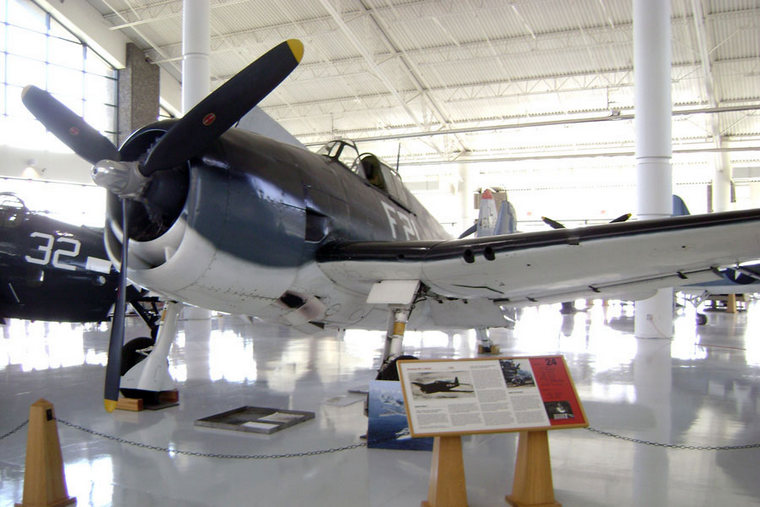 April 25, 2019 - The Collings Foundation, based in Stow, Massachusetts, has confirmed that its Grumman F6F Hellcat will be coming to Oshkosh for AirVenture 2019 after a lengthy restoration. Collings, a non-profit educational foundation, was founded in 1979, and has actively toured a number of warbirds around the country, including a B-17 and a B-24, for more than 25 years. Photo © Collings Foundation. The airplane rotated stateside toward the end of the war, the type having been supplanted by the updated F6F-5N, and served as a training tool at Naval Air Station Norfolk for several years, before going into storage and being declared a museum piece. Interestingly, 41476 was pulled out of storage and restored to flying condition and showcased at air shows for several years, while it was still a government owned. The airplane was displayed at the National Museum of the Marine Corps for much of its life, followed by a decade at the Evergreen Aviation & Space Museum in McMinnville, Oregon, before Collings took ownership. The airplane has been restored at American Aero Services in New Smyrna Beach, Florida, and its appearance at EAA AirVenture Oshkosh will make it a key piece of the "Year of the Fighter" as well as our commemoration of the 75th anniversary of the push to victory in World War II.  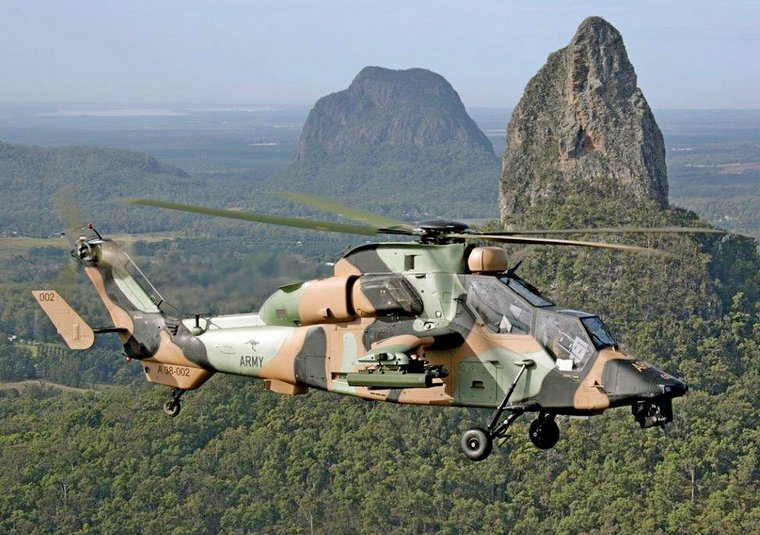 Airbus has been awarded an extension of the Australian Army's Armed Reconnaissance Helicopter (ARH) Tiger through-life support (TLS) contract by the Australian Department of Defence. Airbus Australia Pacific Managing Director Andrew Mathewson said that the five-year, TLS contract extension reflected the current standing of the Tiger in Australia. Photo © Airbus "I'm proud that more than 200 full time positions will remain in Australia to carry out this very important work supporting the Army Aviation Australia-wide, including the creation of apprenticeships in Darwin," he added. "Moreover, our Airbus engineering capabilities continue to expand thanks to this contract, with key software and modifications being developed on Australian soil." The two-seater ARH Tiger attack helicopter serves as a key asset for the Australian Army. Today, the fleet of 22 ARH Tiger has flown over 30,000 hours, deployed for day-and-night surveillance and fire-support missions. Globally, 181 Tigers have been delivered to Australia, France, Germany and Spain, and have accumulated over 115,000 flight hours to date. First deployed by the French Army in Afghanistan in 2009, the Tiger continues to demonstrate its essential role on theatres of operation as a highly versatile, stealthy, and manoeuvrable attack helicopter.   Since first flight, the world's first production tiltrotor delivers capabilities that no other aircraft can match, enabling expeditionary and agile operations in any domain. The V-22 has become one of the most in-demand and reliable aircraft in military service with its unique vertical manoeuvrability combined with the speed, range and fuel efficiency of a fixed-wing airplane. Photo © Bell. So far, more than 375 V-22 aircraft have accumulated more than 450,000 flight hours across a spectrum of missions. Soon, the U.S. Navy will begin using a new V-22 variant to deliver personnel and cargo to its aircraft carriers, becoming the latest operator leveraging the aircraft's unique capabilities. "Over the last 30 years, the V-22 has reshaped power projection, assault support and special operations airlift. Since that first flight in Arlington Texas, the V-22 has proven its worth on the battlefields of Iraq Afghanistan, Syria and around the world. Thirty years later, now a networked platform, still with unmatched speed, and battlespace reach, the V-22 continues to enable global power projection and worldwide crisis response on a scale never before possible. The US Services and our allies look forward to the next 30 years of V-22s dominating the battlefield." said U.S. Marine Corps Col. Matthew Kelly, V-22 Joint Program manager. The V-22 has deployed to operations in Afghanistan, Iraq, and Kuwait, and participated in humanitarian operations, including earthquake relief in Haiti and Japan and hurricane response in the United States. Military leaders continue to find new uses for the V-22. The missions it performs include airborne command and control, airborne fleet logistics, combat search and rescue and special operations support, among others. The V-22's unique tiltrotor design means the aircraft takes off and lands like a helicopter and flies as a propeller-driven aircraft. These characteristics offer the tactical flexibility to deploy with a smaller logistical footprint and without a runway to access areas that are unreachable with any other aircraft. Major production locations are Philadelphia and Amarillo, with Rolls-Royce producing the aircraft's two engines in its Indianapolis facility. The V-22 industry team is not only producing new aircraft, but it is also working with the Marine Corps to reduce the number of aircraft configurations and simplify designs for readiness improvements for the active V-22 inventory.  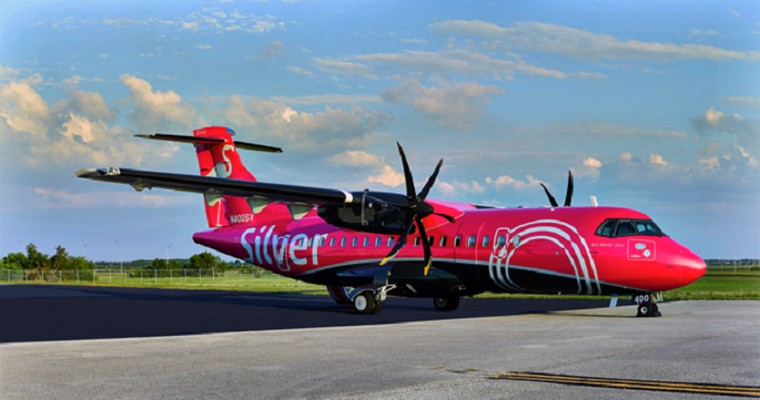 Silver Airways yesterday its regularly scheduled flights aboard its new ATR -600 series aircraft. Silver Airways, America's leading independent regional airline, is reinventing the regional flying sector by being the first U.S. carrier to operate the technologically advanced, customer friendly ATR -600 series aircraft. Photo © ATR. The new aircraft are allowing Silver to expand its service in the Southeastern United States, the Bahamas and the Caribbean. By initially introducing the mission-specific ATR 42-600 aircraft, with seating for 46, Silver now has the unique ability to offer quicker direct flights to even more short and medium-haul leisure and business destinations in both domestic and nearby international markets. Silver Airways has taken delivery of three of up to 50 new ATR -600 series aircraft, including an initial order for 20 ATR -600 aircraft split among the 46-seat ATR 42s and the 70-seat ATR 72s. As the world's leading regional flying aircraft, the new ATRs will provide Silver's passengers unparalleled experience and reliability and pilots the industry's most advanced cockpit. Silver intends to take delivery and begin operating five more ATR 42-600s in 2019, and subject to regulatory approval, the airline is planning to take delivery of at least three ATR 72-600s this year. All of the initial 20 aircraft are expected to be in service by 2020.   Germany, Hamburg: An Easyjet Switzerland Airbus A320-200 preparing for a flight from Hamburg to Basel/Mulhouse (Switzerland/France), was cleared to line up on runway 05 behind a landing Turkish Airlines A321-200 and wait. After the A321 had passed threshold runway 05 the Easyjet A320 taxied into position and commenced take-off, when the Turkish A321 was still on the runway during roll out. Tower instructed the A320 to stop immediately, the crew complied and rejected take-off at high speed, the aircraft slowed to taxi speed about 1600 meters/5250 feet down the runway and vacated the runway via taxiway D7 just at the same time when the A321 vacated the runway via taxiway E6 about 2950 meters/9680 feet down the runway. Italy, Bologna: A Scandinavian Airlines flight landed about 65 miles away from its target airport because of a GPS error. The plane that left from Copenhagen was scheduled to fly to Florence but before take-off, the pilots discovered they did not have "the correct flight route information" and "had to find another airport in which to land." They decided instead to program a flight to the nearby city of Bologna, located about 65 miles away. The compromise for passengers was that a shuttle bus would take them to their intended final destination. USA, six miles off Kerrville Municipal Airport: A Beechcraft 58 Baron on a private flight from Houston-West Airport with six on board impacted terrain while on approach to Kerrville Municipal Airport, in Kerrville, Texas. The aircraft sustained unreported damage and all six occupants were fatally injured. Sudan, Khartoum: An Asia Airways Antonov AN-26 freighter performing a positioning flight from Djibouti (Djibouti) to Khartoum (Sudan) with 5 crew, ran out of fuel about 40nm short of Khartoum Airport and was forced to land in open terrain. There were no injuries, the aircraft sustained substantial damage however. Philippines, Barangay Anilao: An Airbus Helicopters H130 (Eurocopter EC 130T2) operated by LGC Air Transport with six on-board crashed under unknown circumstances into a fish pond. Two occupants died, another was taken to a hospital and died later. The helicopter that had departed Manila-Villamor Air Base was destroyed. Canada, near Gillam Airport: A Beechcraft 200 Super King Air, operated by Keewatin Air, on a medevac flight from Winnipeg International Airport en-route to Churchill Airport reportedly suffered a loss of power in both engines. The flight crew attempted to reach Gillam Airport for an emergency landing however had to touch down on the surface of a frozen lake, just short of the runway. The aircraft impacted the up sloping shoreline causing both main landing gear legs to separate. The aircraft continued and slid on the runway. The two pilots and two medical staff were not injured.   4 MAY 1942 The Kufra tragedy occurred in May 1942 during World War II when eleven of twelve South African aircrew flying in three South African Air Force No. 15 Squadron Bristol Blenheim Mark IV aircraft died of thirst and exposure after the flight became lost following a navigational error near the oasis of Kufra in Libya and made a forced landing in the Libyan Desert. The only survivor was Air Mechanic N St. M Juul who testified at the board of enquiry.  The board attributed the failure of the ground and air searches to a lack of accurate information regarding the possible position of the aircraft; the difficult terrain; the sandstorm; problems with unserviceable aircraft that could not carry out search functions assigned to them; and poor signal organisation. It also found that the downed Blenheim crews did little to assist the searchers in finding them because the crews engaged in bad direction-finding procedures even after landing and failed to employ visual signals and smudge fires.  The inquiry also identified reasons for the early death of the stranded aviators, finding that they failed to appreciate their plight or to ration water immediately and that they made unintelligent use of compass alcohol, having drunk it despite its poisonous qualities, and fire extinguishers, which they had sprayed on themselves for temporary relief from the heat resulting in the infliction of painful skin injuries. To avoid any recurrence of the Kufra incident, the board made comprehensive recommendations with regard to equipment to be carried on aircraft likely to fly over the desert and emergency procedures in the event of forced landings in the desert. It also recommended that only experienced crews operate from Kufra, and that strict procedures be established for operations from Kufra to ensure that aircraft not become lost in the first place and be more easily located if forced down. The search parties buried the three men found with Z7513 next to the plane, and the eight men found dead around Z7610 and T2252 at their discovery site. In May 1942, Z7610 and T2252 were repaired and flown back to Kufra. T2252 later suffered engine failure and crashed near Kufra, but Z7610 operated with No. 15 Squadron's detachment there until 27 November 1942, when the detachment departed Kufra to return to the squadron. By that time, the squadron had converted to Bristol Bisleys - the Mark V ground-attack variant of the Blenheim - so the detachment left Z7610 behind at Kufra to be repaired by a Royal Air Force Maintenance Unit (MU) and flown to Khartoum in the Sudan. A geological survey party rediscovered Z7513, and the bodies of its three crewmen were exhumed and reburied in Knightsbridge War Cemetery at Acroma, Libya. The bodies of the eight men found with Z7610 and T2252 remained where the search party buried them in the Libyan Desert in May 1942 until 1963 when they were reinterred in Knightsbridge War Cemetery.  |
                     |
 |
 |

Copyright © Pilot's Post PTY Ltd
The information, views and opinions by the authors contributing to Pilot's Post are not necessarily those of the editor or other writers at Pilot's Post.